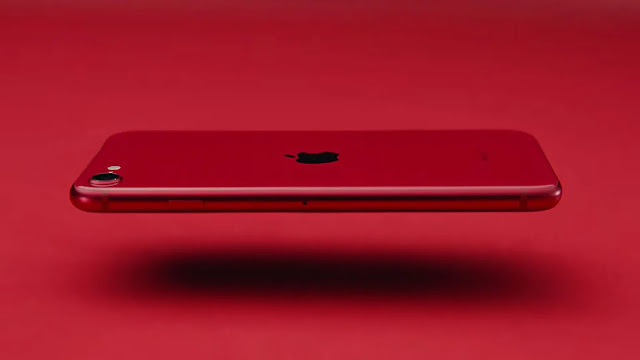Will it be suitable for you, though? You can find the answer with our brief comparison of the iPhone 14 and iPhone SE 4.

iPhone SE 4 vs. iPhone 14: Is it wise to hold off until the next model?
Rumored specifications for the iPhone SE 4
6.1-inch 60Hz OLED panel for display
A16 Bionic Chipset
3,279 mAh battery
12-megapixel wide-angle lens on the rear camera
Front camera: 12-megapixel Face ID-enabled TrueDepth camera
20W wired and 15W wireless charging
Other features: Action Button and USB-C port
Comparing the specs of the iPhone SE 4 and iPhone 14
With its display notch, the iPhone 14 may now appear outdated, but other than that, it still demonstrates how Apple's attention to small design details makes its products stand the test of time. The iPhone SE 4 would have a stronger argument against the increasingly futuristic-looking Android midrange/flagship killer smartphones if it adopted the iPhone 14's design. One distinguishing feature between the more expensive iPhone 15 and the more reasonably priced iPhone SE 4 could be the display notch. To keep the price low, Apple probably won't add another lens to the back of the device.
Nevertheless, the updated iPhone SE 4 will have an Action Button and a USB-C charging port, if some of the rumors about it are to be believed. Indeed, an Action Button that is absent from the base model iPhone 15 as well!
iPhone SE 4 comes out on top.
Exhibit
While having the same display as the iPhone 14 may not sound exciting to those coming from the iPhone 13 or later, the iPhone SE 4 is a significant upgrade for those using the 2nd and 3rd Gen iPhone SE models. In addition to being larger, the 6.1-inch Super Retina XDR OLED display will provide a far superior viewing experience. It is probable that the design will incorporate a notch to accommodate the Face ID sensors.
Both the more costly iPhone 15 and the iPhone 14 miss having a high refresh panel, and we don't think Apple will be too kind to the iPhone SE community.
Winner: Draw
Achievement
In this particular area, the iPhone SE 4 may provide a significant upgrade over the iPhone 14. The A16 Bionic chip, which powers the iPhone 14, is faster than the A16 Bionic chip (or even the A17 chip, if Apple decides to let it all hang out), even though the older A15 Bionic chip is still capable of handling typical smartphone tasks. The updated chip in the iPhone SE 4 will allow iOS to function at its peak by providing a slight boost in processing performance and power efficiency.
iPhone SE 4 emerged victorious.
Cameras
The iPhone SE 4 might have a single 12-megapixel camera system if Apple keeps up the tradition of the previous models having a single rear camera system. You might be able to take excellent photos with this one 12-megapixel rear camera if you know your way around a camera. Nevertheless, when photographing a landscape, the absence of an ultrawide camera is frequently overlooked. We don't think Apple could provide a functional lossless digital zoom feature on this phone with only 12 megapixels.
Therefore, even though it is more than a year old, photographers will find that the iPhone 14's dual 12-megapixel rear camera setup is a better option. Its Action Mode, Cinematic Mode, and sensor-shift stabilization are excellent tools for mobile videography.
iPhone 14 is the winner.
Battery-Powered
According to rumors, the 3,279mAh battery found in the iPhone 14 will essentially be used in the iPhone SE 4. If this is accurate, it will be a major upgrade for users coming from the second and third generation iPhone SE, which has a bad reputation for having inconsistent battery life. With moderate use, the iPhone 14 can easily last for a full day, and given the efficiency of the recently released A16 Bionic chip, it may even provide longer battery life.
The iPhone SE 4's charging port, which replaces the recognizable Lightning connector with the widely used USB-C connector, is another benefit. This implies that owners of iPhone SEs will also be able to charge their devices anywhere with widely accessible USB-C chargers. An additional degree of convenience is anticipated with the addition of MagSafe charging.
iPhone SE 4 emerged victorious.
iPhone 14 vs. iPhone SE 4: Our conclusion
iPhone SE 4 is the winner.
Although the iPhone SE's official release date is still unknown, the device now offers a number of significant advantages over the previous generation of iPhones, including improved performance. Even though the iPhone SE is built on the iPhone 14, significant advancements in areas that impact the user experience are anticipated. It will feature a faster chipset, which may also result in a marginally longer battery life—a feature that has historically been problematic for the older iPhone SE models. It will be more manageable to live with than the iPhone 14, which has a Lightning port, thanks to the USB-C charging connector.
The camera system on the iPhone 14, which boasts two lenses and numerous video modes to choose from, is the only area where the device still has an advantage. For casual photography and videography, the iPhone SE 4's single rear camera system, however, might be more than sufficient.
Overall, most people will find that the upcoming iPhone SE 4 with all of its improvements is a better option than the aging iPhone 14.



